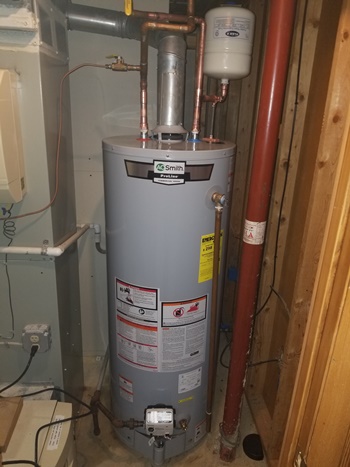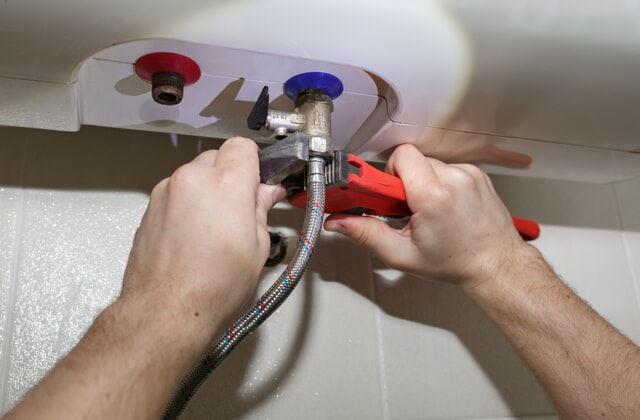Effective Techniques for Maintaining Your Home's Hot Water System
Effective Techniques for Maintaining Your Home's Hot Water System
Blog Article
Are you interested in insight involving How to Maintain a Hot Water Heater in a Few Simple Steps?

Hot water is essential for day-to-day convenience, whether it's for a rejuvenating shower or washing recipes. To guarantee your warm water system runs efficiently and lasts longer, regular upkeep is vital. This write-up provides sensible ideas and insights on just how to preserve your home's hot water system to avoid disruptions and expensive repair work.
Introduction
Maintaining your home's hot water system might appear difficult, but with a couple of basic actions, you can ensure it runs smoothly for several years to find. This guide covers everything from recognizing your hot water system to do it yourself maintenance pointers and understanding when to call in specialist assistance.
Importance of Preserving Your Hot Water System
Routine upkeep not only expands the lifespan of your hot water system however also guarantees it runs successfully. Neglecting maintenance can cause reduced effectiveness, greater power bills, and also early failing of the system.
Indicators Your Hot Water System Requirements Upkeep
Knowing when your warm water system requires attention can protect against major concerns. Look out for indications such as irregular water temperature level, strange noises from the heater, or corroded water.
Understanding Your Hot Water System
Prior to diving right into maintenance tasks, it's helpful to recognize the basic parts of your hot water system. Typically, this includes the hot water heater itself, pipelines, anode poles, and temperature controls.
Regular Monthly Upkeep Tasks
Regular regular monthly checks can help catch minor problems prior to they rise.
Flushing the Water Heater
Flushing your water heater removes sediment accumulation, enhancing performance and lengthening its life.
Monitoring and Changing Anode Rods
Anode rods avoid rust inside the storage tank. Checking and changing them when broken is crucial.
Examining and Changing Temperature Level Setups
Changing the temperature settings guarantees ideal efficiency and safety and security.
DIY Tips for Maintenance
You can carry out a number of maintenance tasks yourself to maintain your warm water system in top condition.
Checking for Leaks
Routinely examine pipelines and connections for leaks, as these can result in water damage and greater costs.
Examining Stress Alleviation Valves
Examining the stress relief valve ensures it functions correctly and protects against too much stress build-up.
Protecting Pipes
Insulating warm water pipelines minimizes warm loss and can save energy.
When to Call a Specialist
While do it yourself maintenance is useful, some problems require professional competence.
Facility Problems Needing Professional Aid
Examples consist of major leaks, electrical troubles, or if your water heater is consistently underperforming.
Regular Professional Upkeep Perks
Professional upkeep can include thorough examinations, tune-ups, and making sure compliance with safety criteria.
Final thought
Regular maintenance of your home's hot water system is necessary for effectiveness, long life, and price savings. By adhering to these suggestions and knowing when to seek specialist assistance, you can guarantee a reliable supply of warm water without unexpected interruptions.
How to Maintain an Instant Hot Water Heater
Before tinkering with your hot water heater, make sure that it’s not powered on. You also have to turn off the main circuit breaker and shut off the main gas line to prevent accidents. Also turn off the water valves connected to your unit to prevent water from flowing into and out of the appliance. 2. When you’re done, you have to detach the purge valves’ caps. These look like the letter “T†and are situated on either side of the water valves. Doing so will release any pressure that has accumulated inside the valves while at the same time avoid hot water from shooting out and burning your skin. 3. When the purge valves’ caps are removed, you have to connect your hosing lines to the valves. Your unit should have come with three hoses but if it didn’t, you can purchase these things from any hardware or home repair shops. You can also get them from retail stores that sell water heating systems. Read the user’s manual and follow it to complete this task properly. When the hosing lines are connected, open the purge port’s valves. 4. You should never use harsh chemical cleaners or solutions when cleaning your unit. Make use of white vinegar instead. It should be undiluted and you’ll probably use about 2 gallons. 5. Now flush your water heater. This task should probably take about 40 minutes. We can’t give you specific directions for this because the procedure is carried out depending on the type, model and brand of your heater. With that being said, refer to the user’s manual. 6. When you’re done draining the unit, you have to turn off the purge port valves again. Remove the hosing lines that you earlier installed on each of the water valves. Put the valve caps (purge port) back in their respective places and be very careful so as not to damage the rubber discs that are found inside these caps. 7. Now that everything’s back in place, check your user’s manual again to find out how to reactivate your water heating system. 8. Once it is working, turn one of your hot water faucets on just to let air pass through the heater’s water supply pipes. Leave the tap on until water flows smoothly out of it. https://www.orrplumbing.com/blog/2014/september/how-to-maintain-an-instant-hot-water-heater/

Do you really like more info about Tips on Maintaining a Water Heater? Place a short review down below. We will be delighted to find out your suggestions about this page. In hopes that you visit us again soon. If you liked our article please do not forget to share it. Many thanks for going through it.
Schedule Services Report this page